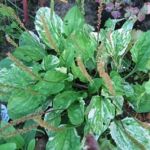| Common Name: |
Asian Plantain |
| Botanical Name: |
Plantago asiatica syn. P. major var. asiatica |
| Genus: |
Plantago |
| Family: |
Plantaginaceae |
| Native Location: |
China |
| Cultivation: |
Well-drained soil in sun (P. asiatica, P. psyllium); moist soil in sun or partial shade (P. major) Plantago major is prone to powdery mildew in dry conditions. |
| Propagation: |
By seed sown in autumn or spring. Plantago major and variants self-seed freely and spread from borders into lawns and paths. Variants come reasonably true from seed. |
| Harvest: |
Plants are cut during the growing season and used fresh, as juice, or dried for decoctions (P. asiatica). Leaves are cut before flowering and dried for infusions, liquid extracts, and tinctures (P. major). Ripe seeds are dried for decoctions and powders. |
| Varieties: |
Variegata
Has irregular, white variegation. |
| Height: |
20-60cm (8-24in) |
| Width: |
15-30cm (6-12in) |
| Hardiness: |
Z3-9 |
| Parts Used: |
Whole plant (che qian cao), seeds (che qian zi). |
| Properties: |
A cooling herb that is diuretic and expectorant, reduces inflammation, stops bleeding, and controls coughing. |
| Medicinal Uses: |
Internally for complaints associated with "overheating", such as acute infections of the lungs and urinary tracts, hepatitis, and boils (whole plant); diarrhea, urinary complaints, coughs with profuse phlegm, conjunctivitis, and vertigo (seeds). |
| Bibliography: |
The Encyclopedia of Herbs by Deni Bown, Copyright © 1995, 2001 Dorling Kindersley Limited. pg. 322
|
